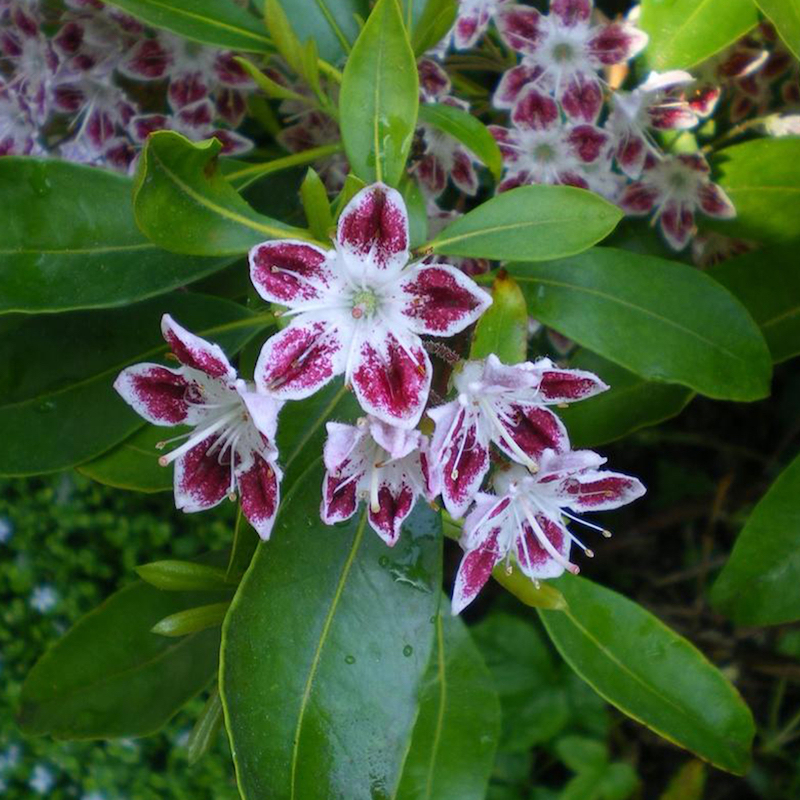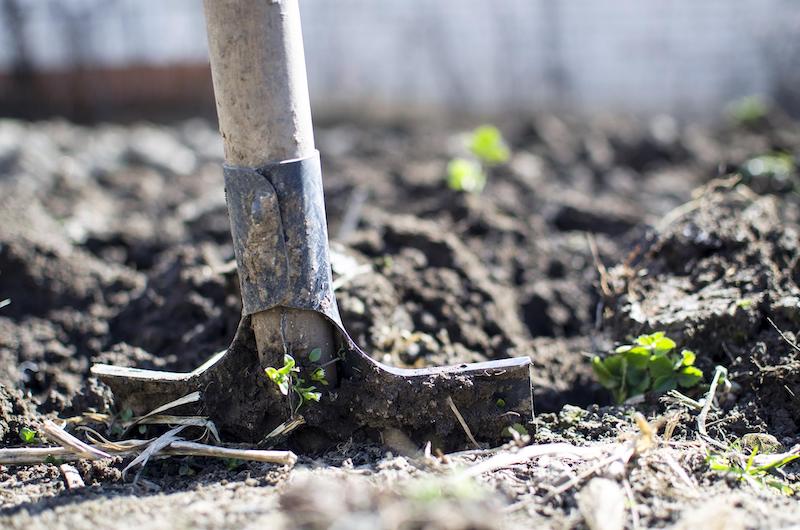Mountain Laurel is known by many different names across the United States. Bog Laurel, Swamp Laurel and Sheepkill are more properly known scientifically as Kalmia latifolia. Mountain Laurel is a native to the woodlands of Eastern North America and is an understory plant that thrives in the dappled shade of taller deciduous and evergreen trees. Planting Mountain Laurel correctly will produce a shrub that is long lived and as low-maintenance as a plant can be.

What you need to Plant Mountain Laurel
- Shovel
- Watering can
- Site that has naturally acidic and humus rich soil
- Organic compost or leaves to use as mulch
- Drip irrigation or soaker hoses to provide water after planting

Where to Plant Mountain Laurel
Mountain Laurels grow best when they have a bit of both sun and shade. Dappled sun, full sun early in the day, with part to full shade the rest of the day or bright shade are all good choices. The soil needs to be acidic with a pH below 6.0. Humus-rich soil that has organic material added will provide excellent drainage along with water-retaining abilities. Mountain Laurel likes to have soil that is constantly moist, but not water logged at any time of the year. Water-logged soils in the winter will lead to root rot and eventually death of this evergreen shrub.
Mountain Laurel Spacing
No additional support is needed for Mountain Laurel. It has a naturally rounded and open upright habit that stays relatively compact. The root systems are not invasive and fairly shallow, making this a good evergreen for foundation planting or used along a driveway. Mountain Laurel looks great planted as an informal hedge or in multiples in a woodland setting in a large garden. Smaller gardens can grow smaller, dwarf varieties in containers or a larger variety as a specimen plant. Heights range from 4-15 feet and widths anywhere from 4 to 8 feet. Mountain Laurel needs to be planted 5-6 feet on center from other plants to provide good air circulation on all sides of the shrub.
Steps to Plant Mountain Laurel
Step 1 - Dig a hole that is twice as wide and the same depth of the pot in which the plant is growing.
Step 2 - Remove the shrub from pot and gently tease out any pot-bound roots so that they will grow out into the surrounding soil.
Step 3 - Place rootball in hole making sure the shrub is level with the surrounding soil or slightly above it.
Step 4 - Make sure the shrub is situated with its best side showing.
Step 5 - Replace soil around the rootball, firming it in well with no air gaps.
Step 6 - Water shrub in well with at least 1 gallon of plain water. This will also help to settle in any air gaps.
Step 7 - Let this water soak in very well and then add more soil around the base of the shrub if needed.
Step 8 - Mulch around the base of the shrub with 3 inches of arborist chips or organic compost to help keep the root zone cool and lock in moisture.
When to Plant Mountain Laurel
The optimal time to plant a shrub or tree is late in the summer as the weather starts to cool for fall. The roots are able to establish well before winter without the stress of summer heat and dryness. If planting needs to be done in the spring or summer, very regular watering will be needed through the summer. Shrubs must not dry out before they establish, as it is almost impossible to rehydrate a shrub that has dried out. Planting shrubs and perennials on an overcast day that is relatively cool is ideal. The plants experience less shock and will recover much quicker.
Transplanting Mountain Laurel
Mountain Laurel does not like to be moved very much and can take a couple of seasons to recover when transplanted. Make sure the spot you choose is right from the beginning. Dividing is not possible with Mountain Laurel. It is best propagated from seed, or with a little more effort, from cuttings taken in the summer. Hardwood cuttings are more successful than softwood when starting broadleaf evergreens. Container-grown Mountain Laurel does not need to be re-potted on a regular basis. Simply scraping out the top 2 inches of soil from the container and replacing with potting soil mixed with either worm castings or organic compost will provide the nutrients needed to revive the container.
 |
Author Robbin Small - Published 6-28-2022 |
